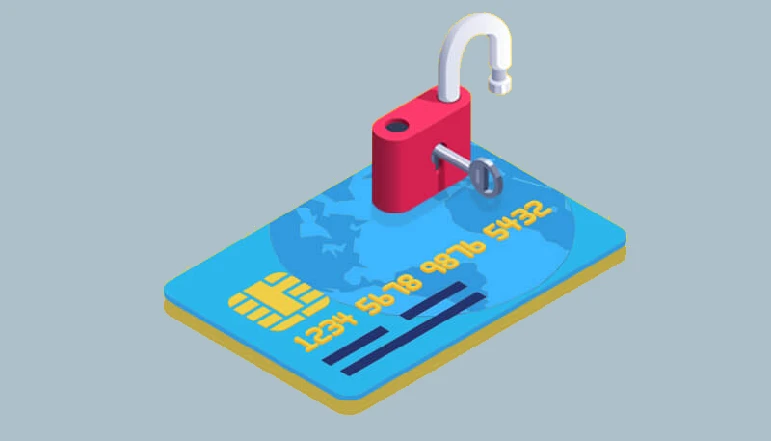
Picture this: one small click, one overlooked update, and your sensitive data is up for grabs. Security breaches don’t just happen in movies—they’re real, costly, and closer than you think. But here’s the good news: they’re preventable. Are you ready to learn how to keep your data and systems safe from prying eyes? Let’s dive in!
Understanding Security Breaches
When it comes to protecting sensitive data and keeping businesses running smoothly, understanding security breaches is a must. Think of it this way: a security breach is like someone sneaking into your house through an unlocked window. In the digital world, though, that “window” could be weak passwords, outdated software, or even human error. Let’s break it down so we can better guard against these risks.
What Is a Security Breach?
A security breach happens when unauthorized individuals gain access to protected systems, networks, or data. This access can result in stolen information, system disruptions, or financial losses. Picture your confidential data—credit card numbers, intellectual property, and even health information—being accessed without permission. Scary, right?
For businesses, preventing such breaches requires constant vigilance, specialized tools, and expert guidance. Managed IT services usually provide comprehensive solutions, from proactive monitoring to real-time response, helping to secure systems and data. You can learn more about how partnering with a managed IT service provider can bolster your defenses through other resources available online.
Types of Security Breaches
Security breaches come in many flavors, each requiring unique strategies to tackle. Here are some common ones:
- Data Breaches
This is when sensitive information, such as social security numbers or personal information, gets exposed. These breaches often result in identity theft or financial fraud. - Ransomware Attacks
In this case, cybercriminals lock you out of your own systems or data until you pay a ransom. These attacks can bring businesses to a grinding halt. - Phishing Attacks
This happens when attackers pose as legitimate entities, such as your bank or a coworker, to trick you into sharing sensitive data. These attacks rely heavily on social engineering to exploit trust. - Insider Threats
Sometimes the risk comes from within. Malicious insiders or even careless employees can unintentionally expose systems to breaches. - Denial of Service (DoS) Attacks
These attacks overwhelm your systems, making them inaccessible to legitimate users. They don’t steal data but cause significant disruption.
Proactively adjusting your browser security settings is one way to protect yourself from certain types of attacks, such as phishing or data breaches through compromised web apps.
Common Causes of Security Breaches
Understanding what causes breaches is key to stopping them in their tracks. Let’s spotlight the main culprits:
- Human Errors
Believe it or not, people are often the weakest link in cybersecurity. A single employee clicking a malicious link or reusing weak passwords can open the floodgates. - Weak Passwords
If your password is “12345” or “password,” you might as well leave the front door open. Strong password policies are your first line of defense. - Outdated Software
Hackers love exploiting known vulnerabilities in outdated software. Patch management ensures systems stay up-to-date and secure. - Insider Threats
Whether malicious or accidental, employees can sometimes bypass security measures, causing breaches. This is why insider threat management is vital. - Unsecured Networks
Using public Wi-Fi without a secure connection (like a VPN) is an open invitation for cyber attackers to snoop on your activities. - Lack of Security Awareness
If employees aren’t trained to spot phishing emails or understand the importance of data protection, they’re more likely to fall victim to scams.
Why Security Breaches Matter
Did you know that 422.61 million data records were actually leaked in data breaches in the third quarter of last year? And the effects of a security breach can ripple far beyond the initial incident. Businesses risk losing customer trust, damaging their reputations, and facing financial penalties. For individuals, the consequences may include identity theft or fraud that can take years to untangle.
Beyond financial and reputational damage, breaches can also have legal implications. Data protection regulations like GDPR and HIPAA require organizations to handle breaches responsibly. Failing to do so can lead to hefty fines.
How Understanding Breaches Helps Prevention
Knowing the types and causes of security breaches is half the battle. By identifying potential vulnerabilities, you can take targeted steps to shore up defenses. This includes implementing strong password policies, regularly updating software, and educating employees about cybersecurity best practices.
For example, if phishing attacks are a recurring threat, rolling out security awareness training can drastically reduce the likelihood of employees falling for scams. Similarly, if insider threats are a concern, tools like access control systems and robust monitoring can make all the difference.
By understanding security breaches, their causes, and their impacts, you’re better equipped to prevent them. Think of it as learning the rules of a game before you play—because in the world of cybersecurity, knowledge isn’t just power; it’s protection.
10 Best Practices to Prevent Security Breaches
Preventing security breaches requires more than just installing antivirus software and crossing your fingers. It’s about creating layers of protection that make it nearly impossible for attackers to find a way in. Let’s dive into the best practices to safeguard your data and systems.
1. Use Strong and Unique Passwords
Passwords are like keys to your digital kingdom—treat them wisely. Weak passwords are an open invitation for hackers. Follow these tips to bolster your defenses:
- Use at least 12 characters, mixing uppercase and lowercase letters, numbers, and special symbols.
- Avoid common phrases or easily guessed words like “password123.”
- Invest in a password manager to store and generate strong passwords securely.
When your passwords are strong and unique, unauthorized access becomes a much tougher nut to crack.
2. Enable Multi-Factor Authentication (MFA)

MFA is the ultimate bouncer for your accounts. Even if someone steals your password, they won’t get far without the second layer of verification—like a text message code or a fingerprint scan.
Set up MFA on:
- Email accounts.
- Cloud storage.
- Any system containing sensitive information.
Think of MFA as your digital backup plan—it’s worth the extra seconds.
3. Keep Systems and Software Updated
Outdated software is like a rusty lock—it’s begging to be picked. Developers release patches to fix vulnerabilities, but those updates won’t protect you if you don’t install them.
- Enable automatic updates for your operating system, apps, and antivirus software.
- Regularly audit your systems to check for unpatched vulnerabilities.
Every update you apply is one less opening for hackers to exploit.
4. Educate and Train Your Team
Even the best technology can’t protect you from human errors. That’s why training your team is vital:
- Teach employees how to identify phishing attacks and avoid suspicious links.
- Run regular cybersecurity drills to keep everyone sharp.
- Explain the importance of reporting incidents quickly, no matter how small they seem.
An informed team is your first defense against insider threats and social engineering attacks.
5. Monitor and Audit Regularly
Staying vigilant is half the battle. Regular monitoring helps you detect unusual activities before they become full-blown incidents.
- Use network monitoring tools to identify suspicious traffic patterns.
- Audit user activity logs to spot unauthorized access attempts.
- Schedule routine security audits to evaluate your defenses.
By keeping an eye on your systems, you can catch potential breaches early and act fast.
6. Protect Data with Encryption
Encryption scrambles data, making it unreadable to anyone without the decryption key. It’s an effective shield for sensitive data.
- Encrypt files stored on devices and in the cloud.
- Use secure communication tools that encrypt messages and calls.
- Encrypt backups to ensure data protection, even in the worst-case scenario.
If hackers intercept encrypted data, they’ll end up with gibberish instead of valuable information.
7. Back Up Data Regularly
Imagine losing all your files overnight—backups are your safety net. A solid backup strategy ensures you can recover quickly after a breach or system failure.
- Use both onsite and cloud backups for redundancy.
- Schedule automatic backups to minimize human oversight.
- Test your backups regularly to ensure they’re working.
When disaster strikes, a reliable backup can mean the difference between a minor hiccup and a major meltdown.
8. Limit Access to Sensitive Data
Not everyone needs access to everything. Restricting permissions reduces the risk of insider threats and accidental leaks.
- Implement role-based access control (RBAC) to ensure users only access what they need.
- Regularly review and update permissions as roles change.
- Immediately revoke access for departing employees or contractors.
The fewer people who can access sensitive data, the lower your risk.
9. Secure Physical Devices
Cybersecurity isn’t just about software—it’s also about securing hardware.
- Lock devices with passwords or biometric authentication.
- Enable remote wiping for lost or stolen devices.
- Use physical locks for servers and workstations.
A stolen laptop with unencrypted data can be just as damaging as a hacked server.
10. Partner with Cybersecurity Experts
Sometimes, you need a pro. Managed IT services or cybersecurity consultants can help identify vulnerabilities and implement advanced protections.
- Look for providers with proven expertise and positive reviews.
- Choose services that align with your budget and needs.
- Schedule regular assessments to stay ahead of emerging threats.
Professional help isn’t just for emergencies—it’s a smart investment in long-term security.
By implementing these practices, you can significantly reduce the chances of a security breach. Cyber threats are always evolving, but with the right strategies in place, you can stay one step ahead. After all, in cybersecurity, prevention really is the best cure.
Responding to Security Incidents
No matter how solid your defenses are, no system is invulnerable. That’s why having a game plan for security incidents is critical. Let’s break down how to handle security incidents with a calm, clear-headed approach.
Steps to Take After a Security Breach
When you discover a breach, the clock starts ticking. Acting quickly can make all the difference. Here’s a step-by-step guide to responding effectively:
- Identify the Breach – Pro tip: Think of this step as a digital detective mission. You need to gather facts before taking action.
- Determine what happened and how. Was it a phishing attack, malware, or unauthorized access?
- Use tools like network monitoring and intrusion detection systems to pinpoint the entry point.
- Contain the Damage – Containment is about putting out the fire before it burns down the whole house.
- Disconnect affected devices from the network to prevent the attack from spreading.
- Change passwords and disable compromised accounts immediately.
- Restrict access to sensitive data while the breach is being addressed.
- Assess the Impact – Knowing what’s at stake helps you prioritize your next moves.
- Identify the data affected—was it personal information, intellectual property, or operational systems?
- Estimate the scope of the breach, including how many people or systems were impacted.
- Notify Stakeholders – Honest communication builds trust, even during a crisis.
- Inform your internal team and leadership about the breach. Transparency ensures everyone knows their roles.
- If required by law or regulation, notify affected customers and governing bodies.
- Fix the Vulnerabilities – This step is like rebuilding a stronger lock after someone broke in.
- Apply patches to close security gaps.
- Update firewalls, antivirus software, and intrusion detection systems.
- Strengthen access controls to prevent repeat incidents.
- Document the Incident – Think of this as your “post-game analysis”—critical for improving future defenses.
- Keep detailed records of the breach, including what happened, how it was discovered, and the actions taken.
- Use this documentation for compliance, legal purposes, and to learn from the event.
When a breach happens, quick and strategic action can limit the damage and protect your data.
Creating an Incident Response Plan
Flying by the seat of your pants during a security incident is a recipe for chaos. That’s why having a well-thought-out incident response plan (IRP) is so important. Here’s what your plan should include:
- Clear Roles and Responsibilities
- Assign team members specific tasks, like identifying the breach, communicating with stakeholders, and managing technical fixes.
- Include external contacts, such as managed IT service providers or cybersecurity consultants, who can assist during a crisis.
- Step-by-Step Playbook
- Outline the actions to take for different types of incidents, such as phishing attacks, ransomware, or insider threats.
- Make sure your playbook covers everything from detection to resolution.
- Communication Guidelines
- Define how and when to notify employees, customers, and authorities.
- Prepare templates for customer notifications to ensure consistency and clarity.
- Testing and Refinement
- Run regular drills to test your response plan. Simulated breaches can reveal gaps and weaknesses.
- Update the plan based on lessons learned from tests and real incidents.
An incident response plan is like a fire escape route for your data—it ensures everyone knows where to go and what to do.
Learning from Security Incidents
Every security incident, no matter how minor, is an opportunity to strengthen your defenses. After the dust settles, take these steps:
- Conduct a Post-Mortem Analysis
- Gather your team to review what went well and what didn’t.
- Identify root causes and decide how to address them.
- Update Policies and Procedures
- Revise security policies to close gaps exposed by the breach.
- Introduce new measures like stronger password policies or enhanced employee training.
- Improve Your Cybersecurity Tools
- Invest in advanced tools for network monitoring, endpoint security, and intrusion detection.
- Consider engaging third-party experts for ongoing support and audits.
Every incident leaves a trail of lessons—following that trail can lead to stronger protections in the future.
Staying Calm in the Storm
Security incidents can feel overwhelming, but the key is to stay calm, act fast, and learn from the experience. With a solid plan and the right tools in place, you’ll not only recover from breaches but also emerge stronger and better prepared for future threats.
Conclusion
Because in the world of cybersecurity, it’s not about avoiding every storm—it’s about knowing how to weather them.
Securing your data isn’t just a necessity—it’s your responsibility in today’s digital world. By proactively implementing these strategies, you’ll build a fortress around your systems and protect what matters most. Don’t wait for a breach to take action—start strengthening your defenses today and take control of your cybersecurity future












